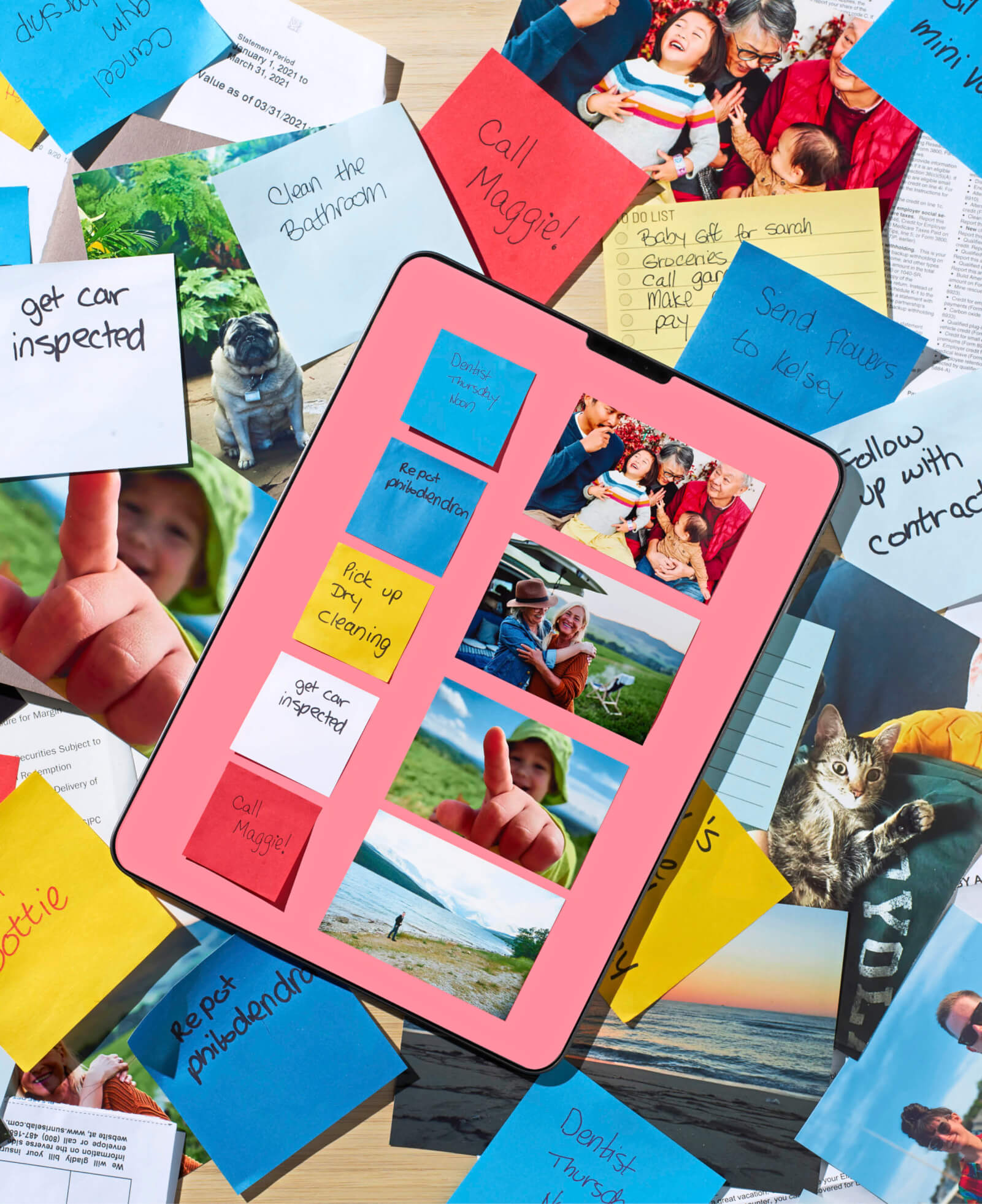SPECIAL SECTION
Organize Better

I can’t keep up with passwords. There are so many of them. Please help.
The most frequent advice given is to get a password manager—a secure online tool that organizes your myriad passwords and requires only that you remember a single “master” one. While that is considered the best way to protect yourself today, it’s another technological layer that many people don’t want to pay for (some charge fees) or manage across devices. Fortunately, there are other options.
Lorrie Faith Cranor, director of Carnegie Mellon University’s CyLab Usable Privacy and Security Laboratory, says the old-fashioned way is the best. “People used to go around saying, ‘Don’t write down your passwords.’ Ignore that advice. You should write down your passwords.” Of course, keep that record someplace secure, not out in the open.
• Other options Web browsers like Chrome, Safari or Firefox will remember passwords for you and autofill them the next time you visit that site. They can also suggest secure passwords created using a random combination of characters. This is generally a safe, secure way to go. Just remember that if you want to access those sites on other devices, you will need to sign in to your browser account and have the sync function turned on.
And there’s always the “forgot password” method. As long as your email address or cellphone number is associated with the account you’re trying to access, it’s easy to reset your password to get back in.
But the headache could be short-lived. John Shier, a cybersecurity expert at Sophos, says a new technology called Passkeys is gaining momentum. It replaces passwords by using your device’s PIN, facial recognition or a fingerprint scan. —Chris Morris
HOW TO
How can I transfer documents from my phone to my PC, or between different phones?

One method that started as a work-around but is now common is to email the file to yourself. You can then access that file on any device where you get your email. Or upload the document to a cloud drive that can be accessed across devices. — Jonathan Ushindi Zaluke, Senior Planet
HOW TO
I’m always running out of photo/video storage on my phone. What can I do?

Adjust the settings so only thumbnails of photos are stored on the phone while the original images are in the cloud.
On an iPhone:
> Launch Settings, tap on the Photos option.
> Turn on the virtual switch for iCloud Photos.
> Tap on the Optimize iPhone Storage option.
On most Android devices:
> Launch the Camera app, then tap on the Settings icon.
> Turn on the virtual switches for High efficiency pictures and High efficiency video. —Jason R. Rich
